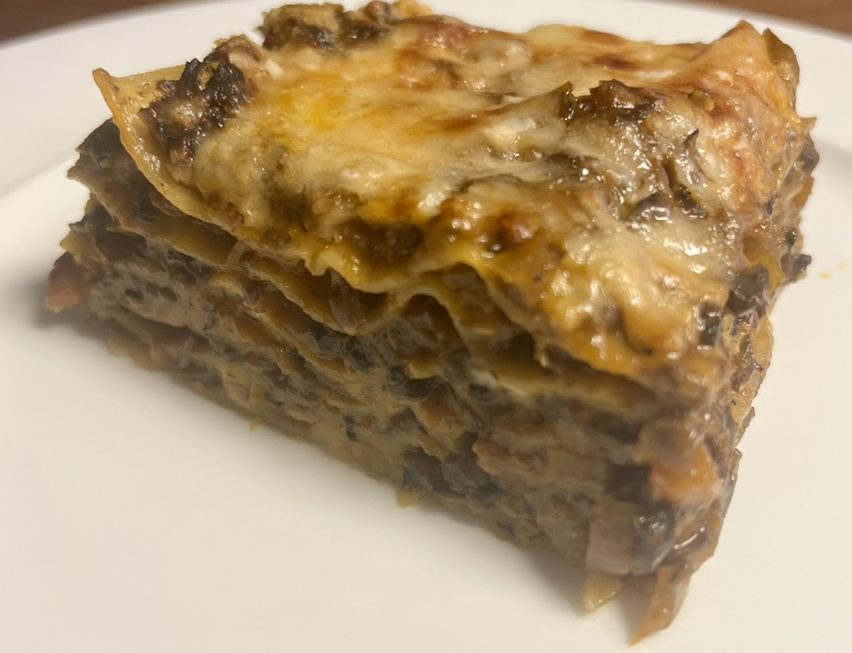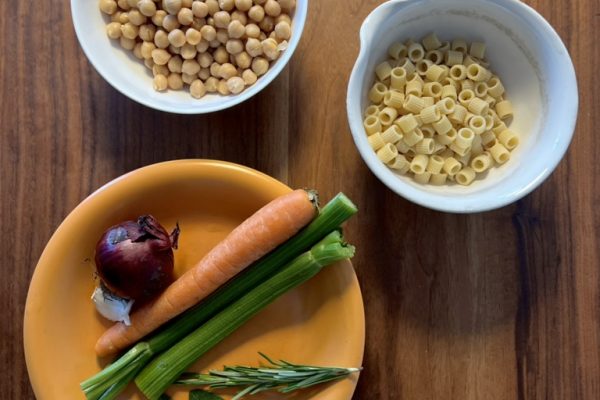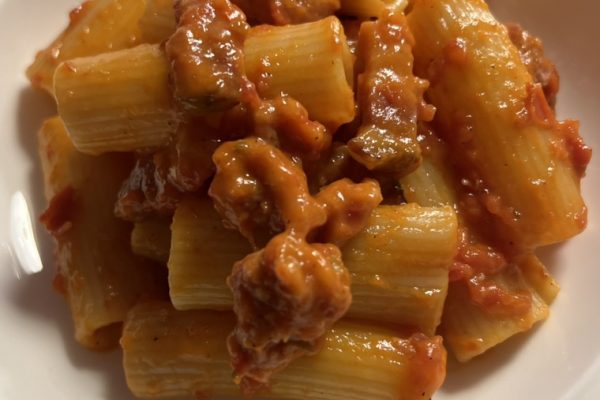Who doesn’t love lasagne? And who hasn’t made one. There are two reasons why we are nonetheless describing this dish: Our favourite way to prepare it is the one from the Italian region of Emilia-Romagna and we have already shown you how to make the ragù alla bolognese required for it here.
We also present a vegetarian version in which the meat is replaced by mushrooms. And it’s simply incredible how close the results are. We particularly like this because we are not fans of industrial meat substitutes.
The classic lasagne from Emilia-Romagna has thin layers and, above all, is not overloaded with cheese. If you want to make it, follow these instructions and prepare a classic ragù. The vegetarian version starts with carrot, celery, onion and a considerable amount of mushrooms.

Which mushrooms you use is entirely up to you and you can also mix different varieties. However, you can achieve very impressive results with simple button mushrooms.
Mushrooms are best cleaned dry by rubbing them with a cloth. If you use water, then only very little and briefly, otherwise they will soak with it, which has a negative effect on flavour and texture. The mushrooms then need to be finely chopped. We first cut them into thin slices…

…then cut them crosswise into strips and finally chop them thoroughly into small pieces.
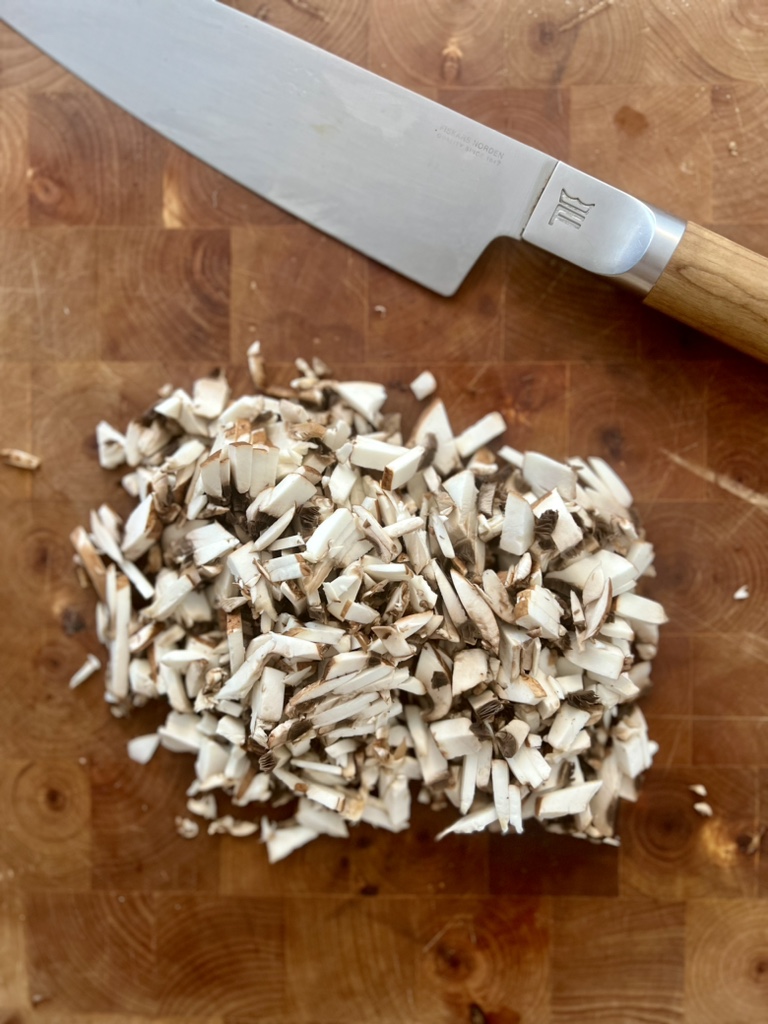
The rest of the vegetables are finely diced; this is called mirepoix in French cuisine. In Italian cuisine, this base for sauces with root vegetables is called soffritto.

The root vegetables are now sautéed over a medium-high heat with a little butter or olive oil for 6 – 8 minutes without taking on any colour. This is soffritto.

The chopped mushrooms are added and sautéed for at least 15 minutes, stirring only occasionally, until they have released their liquid. The whole thing should appear very dry at this point.

Then, as with ragù, red wine is added and allowed to simmer slowly. Now it’s time to season, using garlic powder, dried thyme and mace (or grated nutmeg) to complement the natural flavour of the mushrooms. To enhance the natural umami flavour of the mushrooms, we also use a little soy sauce. Round off with a little salt and ground black pepper.

As soon as the red wine has reduced a little, add the tomato passata as you would with a ragù.

This is left to simmer gently with the lid only half on for at least 45 minutes, but preferably twice as long, until a thick sauce has formed. Unlike ragù, which is prepared with milk, cream is now added and the sauce is reduced again. Remember that it will later be placed on dough sheets and is intended to remain there.
During this time, you cook a simple béchamel. We have explained how to do this here, for example. It is flavoured with a little salt and mace or grated nutmeg.
The only cheese that comes into play is Parmigiano Reggiano. And only a little of it. You can grate it finely or coarsely for lasagne, we choose coarse.
Of course, you need pasta sheets and we can buy fresh pasta where we live. Otherwise, you have to make it yourself, as we have explained here, or buy pasta seca and prepare it according to the packet instructions. But fresh or homemade is better.

Preheat the oven to 170 degrees Celsius without fan.
Grease a baking tin with butter, or alternatively oil. Then start with a thin layer of béchamel. Add a sheet of pastry, then ragù, béchamel and finally Parmigiano. It is important not to overload the individual layers.

We produce a total of 5 – 6 layers, all of them thin.

The lasagne bakes in the preheated oven for 40 minutes.
A time-consuming dish, but one that is easy to prepare and simply tastes outrageously good.
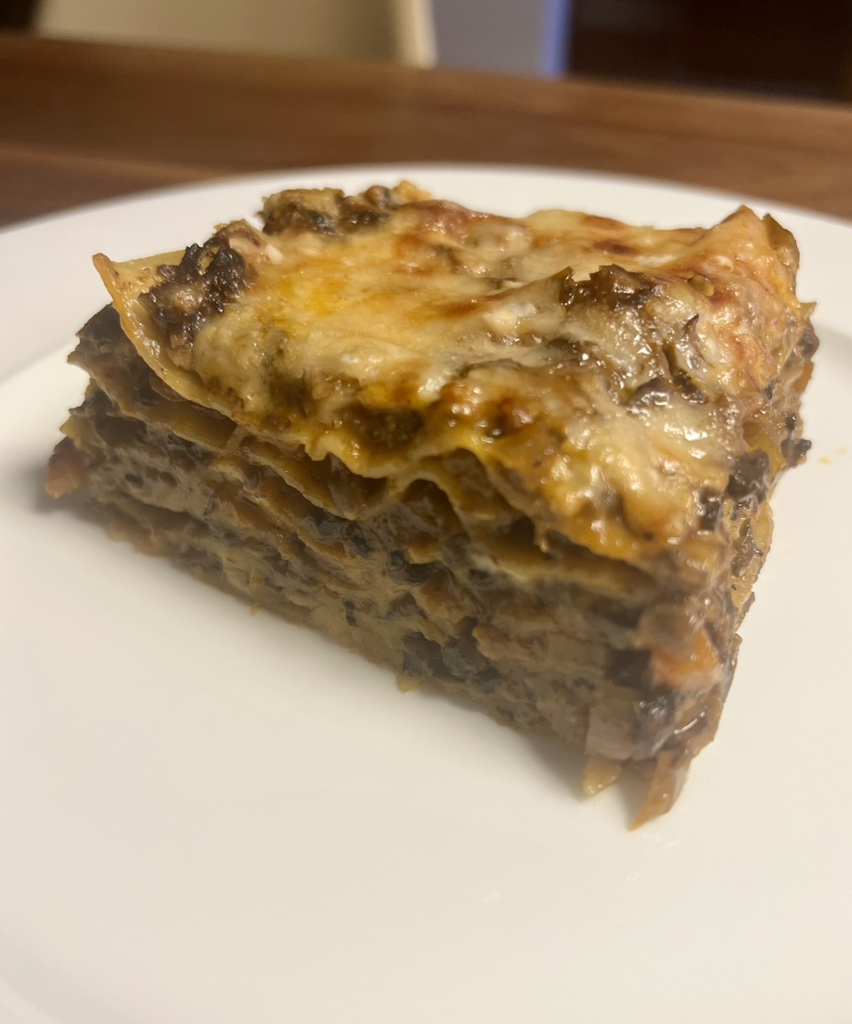
Enjoy.
And may the taste be with you.
Ingredients (for 4 people):
Vegetarian ragù (otherwise: ragù classico):
650 g mushrooms
75 g carrot
75 g celery
75 g onion
A little butter or olive oil
300 g tomato passata
125 ml red wine
2 tsp garlic powder (alternatively 2 cloves of garlic, finely chopped and added to the pan with the mushrooms)
2 tsp thyme, dried
½ tsp nutmeg or 1 teaspoon mace
3 tbsp soy sauce
200 ml cream
Salt and pepper
Béchamel:
50 g butter
50 g flour
500 ml milk
Salt and nutmeg or mace to taste
150 g Parmigiano Reggiano
Pasta sheets, preferably fresh (250 g), alternatively pasta seca
